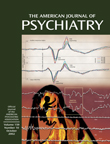Oxcarbazepine for Mood Disorders
Mr. A was a 52-year-old married man who was referred by a therapist in his employment assistance program for hostile behavior, which affected his relationships with family members and co-workers. He had been treated unsuccessfully with divalproate and psychotherapy. He began oxcarbazepine monotherapy, up to 1200 mg/day. He experienced better work productivity, an absence of physical violence toward his wife and co-workers, and fewer depressive days. He reported no side effects.Ms. B was a 27-year-old single woman who was in treatment for childhood sexual abuse, self-mutilation, several suicide attempts, and episodic violent behavior. Since her adolescence, she had been in numerous inpatient and outpatient treatments, which had not produced significant improvement in her symptoms or function. Oxcarbazepine was initially added to her regimen of lorazepam, buproprion, fluvoxamine, trazodone, quetiapine, levothyroxine, and modafinil. Over the next year, she reduced her medications to oxcarbazepine, 600 mg b.i.d., levothyroxine, and trazodone. She had no hospitalizations and no temper outbursts or depressive episodes, was working full-time, and was not receiving Medicaid.Mr. C was a 40-year-old married man who was referred to the clinic for treatment of agitation and conflict with his wife. He was taking buspirone, buproprion, and lithium. Oxcarbazepine, up to 1200 mg/day, was added to his dose of lithium, 900 mg/day. His irritability decreased, his depression lifted, his relationship with his wife improved, and he obtained full-time employment. In the past year, he has been well maintained with oxcarbazepine, 1200 mg b.i.d., and modafinil, 400 mg/day, before his shift work.Mr. D was a 33-year-old man who was referred for treatment of domestic violence. He began oxcarbazepine monotherapy, up to 1200 mg/day. Since then, he has controlled his angry outbursts, felt happier, improved his home life, reduced his alcohol and cannabis consumption to occasional use, and given up his part-time job as a bar bouncer. His friends have also noted the improvement.These patients were initially given 150 mg/day of oxcarbazepine; the dose was increased every 3–4 days by 150 mg until it reached 600 mg at bedtime. Morning dosing was then added, as needed, up to the maximum dose reported per patient. None of these patients had developed hyponatremia when tested within 1 month of initiation of treatment.
References
Information & Authors
Information
Published In
History
Authors
Metrics & Citations
Metrics
Citations
Export Citations
If you have the appropriate software installed, you can download article citation data to the citation manager of your choice. Simply select your manager software from the list below and click Download.
For more information or tips please see 'Downloading to a citation manager' in the Help menu.
View Options
View options
PDF/EPUB
View PDF/EPUBGet Access
Login options
Already a subscriber? Access your subscription through your login credentials or your institution for full access to this article.
Personal login Institutional Login Open Athens loginNot a subscriber?
PsychiatryOnline subscription options offer access to the DSM-5-TR® library, books, journals, CME, and patient resources. This all-in-one virtual library provides psychiatrists and mental health professionals with key resources for diagnosis, treatment, research, and professional development.
Need more help? PsychiatryOnline Customer Service may be reached by emailing [email protected] or by calling 800-368-5777 (in the U.S.) or 703-907-7322 (outside the U.S.).

